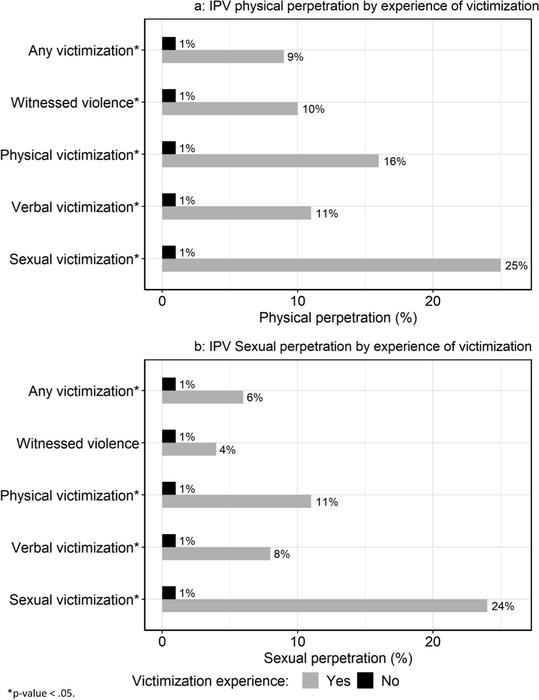The study in question, titled “Measuring real-time violence exposure and its impact on intimate partner violence perpetration among adolescents,” delves deep into the psychological and social factors that contribute to such behaviors. By employing a mobile data collection framework, researchers were able to capture instances of violence and its immediate impact on decision-making and behavior among adolescents, offering insights into the complex dynamics of violence in intimate relationships. This method not only enhances the reliability of the data but also reflects a shift towards using technology in social research to address urgent societal issues.
Intimate partner violence is a deeply ingrained social problem that affects individuals across various age groups, but adolescents are particularly vulnerable. The findings indicate that the repercussions of experiencing violence are not merely isolated events but rather immediate catalysts for subsequent aggressive behaviors. The study highlights a crucial link that needs to be understood by educators, social workers, and policymakers who are involved in youth programming and community support efforts.
Moreover, the study draws attention to the gendered dynamics of IPV. Adolescent boys who have been victims of violence may resort to aggression as a learned behavior, perpetuating a cycle of violence that is often difficult to break. The study authors assert that understanding this cycle is essential for developing effective prevention programs. Educational initiatives that focus on healthy relationship skills, along with emotional resilience, could serve as potent tools in mitigating these concerning trends.
As one dissects the findings further, it’s evident that there are societal implications at play. The exposure to violence is often rooted in complex socio-economic factors, including poverty, family instability, and peer influences. Addressing IPV effectively requires a multi-faceted approach that not only targets the immediate impact of violent experiences but also seeks to transform the underlying social constructs that perpetuate such behaviors.
Furthermore, the research underscores the necessity for mental health support systems to be integrated into violence prevention initiatives. Young individuals who experience violence are at higher risk of developing various mental health issues, including depression and anxiety, which can amplify their likelihood of engaging in IPV. Mental health services, when made accessible and tailored for adolescents, could become a crucial component in breaking the cycle of violence.
The role of parents and guardians cannot be overstated in this context. Parental guidance and effective communication are pivotal in shaping how adolescents process their experiences with violence. Programs that engage parents in workshops focusing on recognizing signs of distress in their children may empower them to provide the necessary support for healthy emotional development.
The research contributes to a growing body of literature that advocates for using real-time data to inform policy and practice. The application of mobile technology in collecting data on violence exposure presents a novel opportunity for real-time intervention and support delivery. This approach opens avenues for developing responsive community programs that can adapt quickly to the evolving needs of adolescents.
On a broader scale, the findings challenge both researchers and practitioners to consider the implications of violence in adolescents’ lives systematically. The interconnectedness of social determinants of health, violence exposure, and behavioral outcomes emphasizes the need for a holistic perspective in addressing these issues.
As the study is backed by significant funding from the National Institute of Mental Health and the South African Medical Research Council, it demonstrates a commitment to understanding and addressing IPV among adolescents globally. The implications of this research extend beyond academic interests, as it provides evidence-based recommendations for policymakers and practitioners to develop informed interventions.
In conclusion, the study “Measuring real-time violence exposure and its impact on intimate partner violence perpetration among adolescents” serves as a critical reminder of the intricate relationship between victimization and aggressive behavior among youth. By illuminating the multifaceted nature of this issue, it compels society to reflect on the environments in which adolescents are raised and the urgent necessity to implement preventative measures. Bridging the gap between research and practice could significantly contribute to ending the cycle of violence and fostering healthier relationships among future generations.
Subject of Research: Adolescent exposure to violence and its impact on intimate partner violence perpetration.
Article Title: Measuring real-time violence exposure and its impact on intimate partner violence perpetration among adolescents.
News Publication Date: 12-Mar-2025.
Web References: http://dx.doi.org/10.1371/journal.pone.0318063.
References: Kidman et al., 2025, PLOS One, CC-BY 4.0.
Image Credits: Kidman et al., 2025, PLOS One, CC-BY 4.0.
Keywords: Adolescent violence, intimate partner violence, boys, real-time data, mobile technology, mental health, prevention programs, social impact, socio-economic factors, parenting, intervention strategies.
Tags: adolescent boys violence exposurebehavioral patterns in youth violenceconsequences of victimization in adolescentscyclical nature of youth violenceinterventions for preventing intimate partner violenceintimate partner violence risk factorsIPV perpetration among adolescentsmobile technology in social researchpsychological impact of violence on behaviorreal-time data collection in researchSouth Africa youth violence studyunderstanding dynamics of intimate relationships





